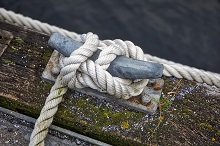Great Lakes Losing Water
Many people don’t realize this, but 2 billion gallons of water are diverted from the Great Lakes daily to tributaries of the Mississippi River at Chicago. This reduces the water levels of Port Huron and Georgian Bay but also allows invasive species (such as the Asian carp), an easy method to move from one watershed to another.
The Chicago River is 156 miles long. The problem started back at the turn of the century. Chicago was being overwhelmed from sewage and stockyard runoff and it was polluting the city’s drinking water. There were deadly outbreaks of typhoid and cholera from the polluted water. Many of the Chicago residents used to call the river “that stinking river” because of the pollution from the growing industrial economy which dumped into the river. Engineers decided to change the flow of the Chicago River in order to flush the pollutants away from the city. They built a 28 mile long canal and instead of flowing into Lake Michigan, it was flushed into the Des Plaines River and then the Illinois and Mississippi Rivers. The canal is used by recreational boaters and barges to move freely from the watersheds, but this is a concern in allowing invasive species such as Asia carp access to the Great Lakes. The flow rates were increased over the years and by the 1920’s; it had increased to 6.5 billion gallons of water daily.
Over the years we have found that these diversions and canals have been very damaging to the environment, the delicate ecosystems, and the benefits now are now very limited. Recently Chicago Mayor Richard Daley commented on these past practices. “Instead of diverting all that water, maybe we should reverse it (to flow into the lake). That could be the salvation maybe of the Great Lakes.” It is also important to note that Chicago Mayor Richard Daley played a pivotal part in the clean up of the Chicago River during the 1990’s from the garbage in the river.
Concerned conversationalists brought the case to the U.S, Supreme Court in 1967 and while they refused to block the diversion, they limited the flow rates to 2.068 billion gallons per day. This is regulated by the joint U.S. – Canadian Great Lakes Commission. Some of the flow is used to flush the canal, while the rest goes towards drinking water for Chicago.
Many of the Great Lake states, including Michigan have sued to block the canal in an effort to keep the Asia carp and other invasive species from getting a foothold in the Great Lakes. They hope that a federal judge will rule to close the canal later this month.
Wayne Sheridan



